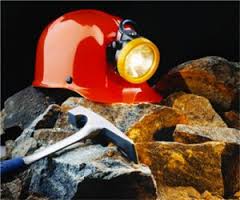 A hefty sum of $430,000 has been charged against BHP Billiton for the death of a mining worker in Port Hedland nearly five years ago. The worker was identified as Mr. Andrew McLaughlin who passed away on 29 July 2008. McLaughlin was crushed by a scissor lift at BHP Billiton's rail workshop in Nelson.
A hefty sum of $430,000 has been charged against BHP Billiton for the death of a mining worker in Port Hedland nearly five years ago. The worker was identified as Mr. Andrew McLaughlin who passed away on 29 July 2008. McLaughlin was crushed by a scissor lift at BHP Billiton's rail workshop in Nelson.
The Department of Mines and Petroleum (DMP) led the investigation last February 2013 and BHP Billiton was found guilty of neglecting to keep a safe working environment. BHP is obligated to indemnify a $130,000 fine and to settle $300,000 in legal costs.
McLaughlin's demise was the result of BHP’s being not able to provide instruction and ample supervision. The lack of enforceable job hazard assessment (JHA) also contributed to the sudden accident.
However, the defense argued that McLaughlin inserted his body into the descent path of the scissor lift without knowing a safety bar was not properly placed. It is for this reason that McLaughlin was not well aware of the hazards and the necessary controls in the work he was carrying out. The lack of knowledge of JHA along with the lack of supervision made this happen.
Safety Executive Director Simon Ridge of the Department of Mines and Petroleum Resources said, “While the majority of mining operators in WA operate to high safety standards, the department will hold those who aren't doing the right thing to account.”
Department of Mines and Petroleum Resources Safety Executive Director Simon Ridge said the successful prosecution should send a strong warning to mining companies across the State.
“While the majority of mining operators in West Australia operate to high safety standards, the department will hold those who aren't doing the right thing to account.”, Mr. Ridge added.
Work Safety Risks among Young Workers
Safe Work Australia published a report that showed work-related injuries mostly victimise Australian workers aged 25 years and below. The main highlights of the findings are:
- Traumatic vehicle fatalities were the cause of death for two thirds of young workers.
- Older workers have lower incidences of work related injuries than younger ones; wherein the largest gap was found in such industries like health care and social assistance, manufacturing, construction and accommodation/food services.
- The hands, fingers and thumbs were mostly involved in injuries among young males.
- Around 25% of all compensated injuries of young workers neglected to apply for worker's compensation following the accident. Half of these workers felt that their injury was too minor to warrant a claim.
The data was taken from the 2009 to 2010 research of Safe Work Australia. A further breakdown of the figures revealed that the rate of injuries per 1,000 young workers was 18% higher than the 25-age bracket. This also translated an injury rate of 66.1 work-related injuries per 1,000 aussie young workers versus the 56.2 injuries recorded per 1,000 workers aged over 25.
Chairman Ann Sherry of Safe Work Australia mentioned that the "alarming statistics" are further proof that youngsters need to fully comprehend different safety issues in workplaces. They also share in the responsibility of learning the safety procedures to ensure protection while on work.
The Chairman further said, "The statistics in this report show us why it is necessary for young people to learn safe workplace practices and who they should go to for help. Often in their first jobs, young workers can get caught up with the excitement of entering the workforce. They may overlook the need to be familiar with the potential workplace hazards and safety procedures in place."


